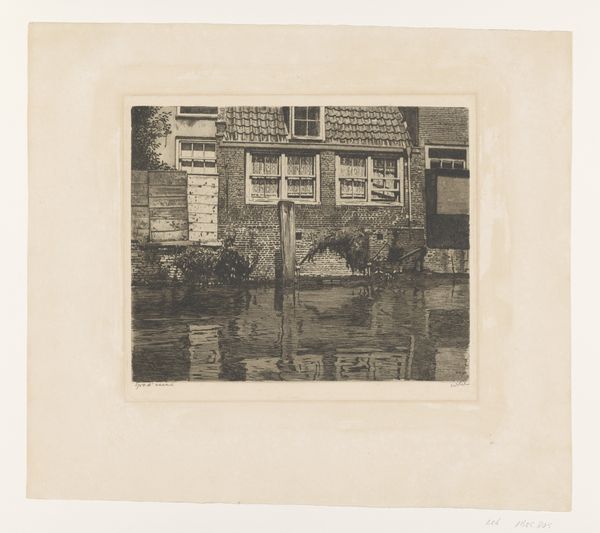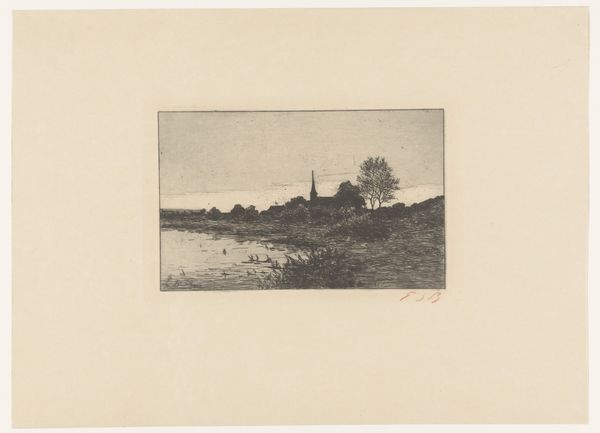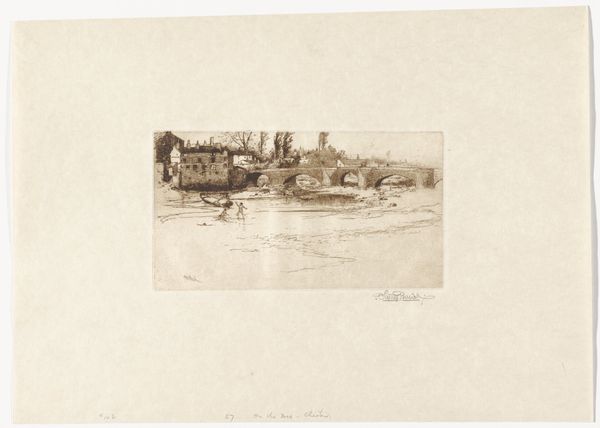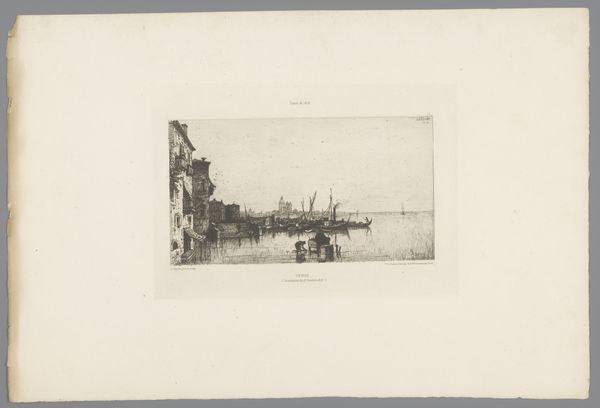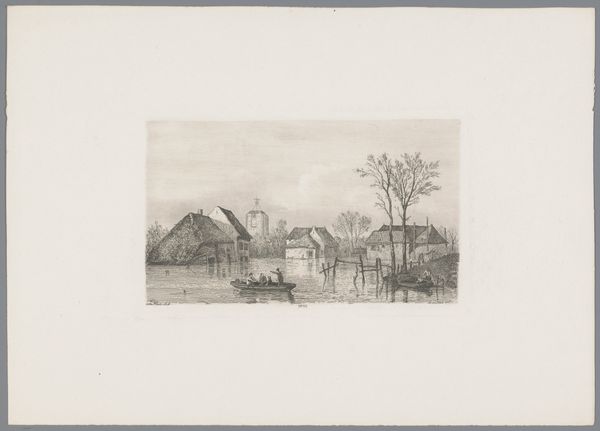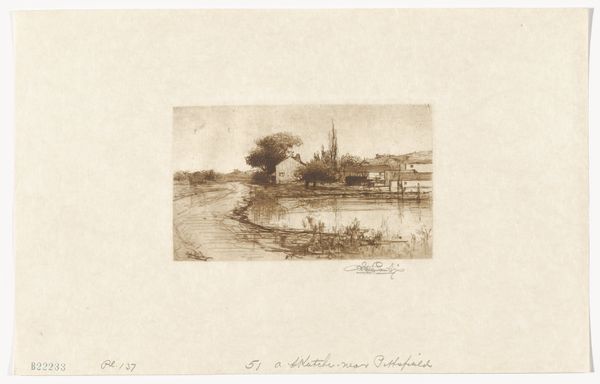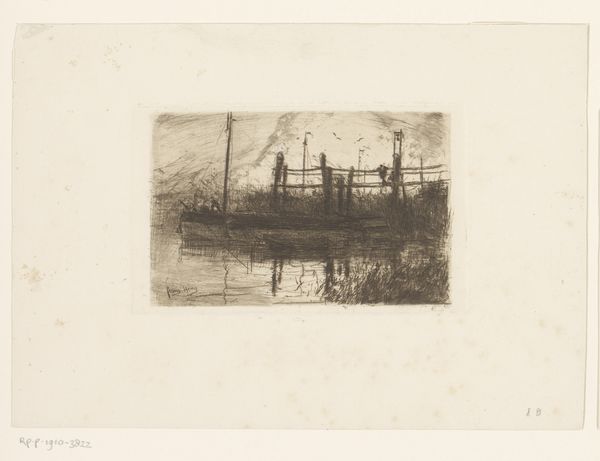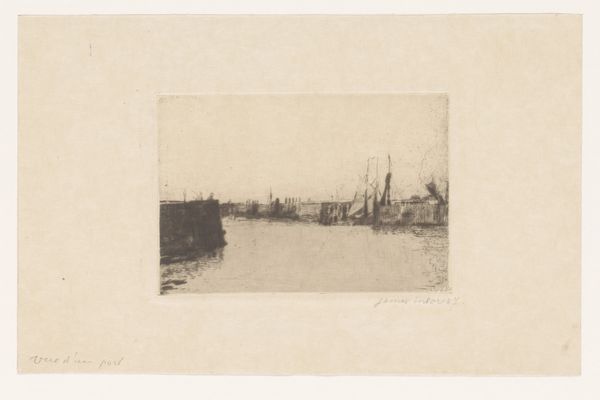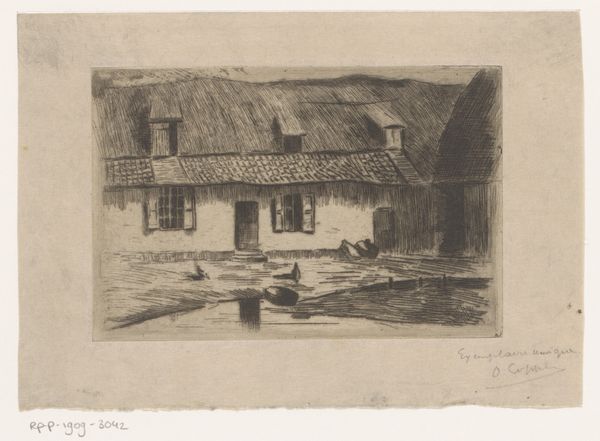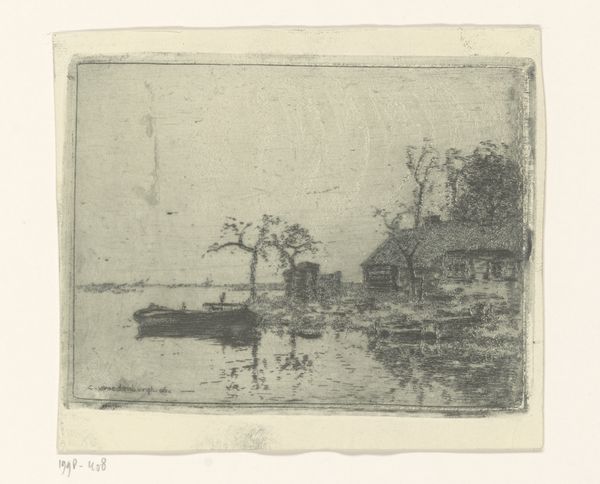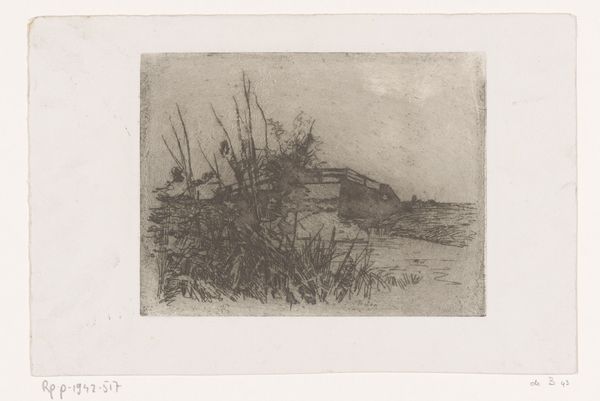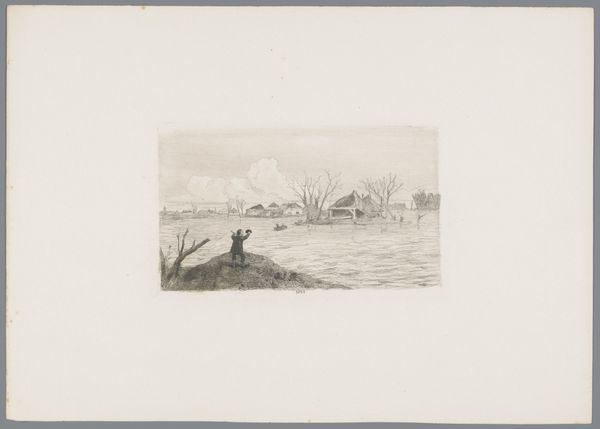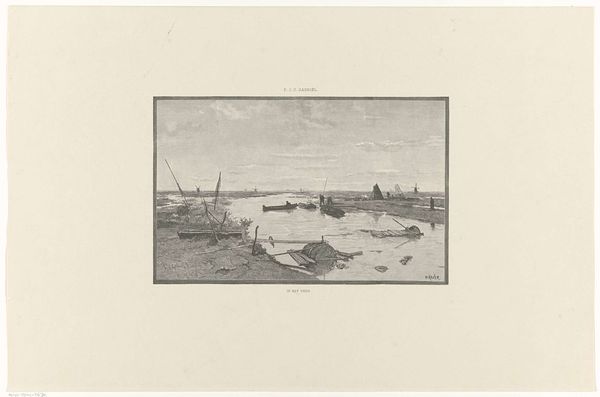
print, etching
#
photo of handprinted image
#
shape in negative space
#
natural shape and form
#
light pencil work
#
natural tone
# print
#
etching
#
natural colouring
#
united-states
#
watercolour illustration
#
remaining negative space
#
botanical art
#
watercolor
Dimensions: 4 x 7 1/2 in. (10.16 x 19.05 cm) (plate)10 3/4 x 13 3/8 in. (27.31 x 33.97 cm) (sheet)
Copyright: Public Domain
Editor: We’re looking at Charles Adams Platt's "Shanties on the Harlem," made around 1881 or 1882. It's an etching, and it has this hazy, almost dreamlike quality. It feels quiet, even a bit melancholic. What strikes you when you look at this piece? Curator: It speaks to the evolving role of the artist in the late 19th century. The choice of subject matter—humble dwellings, the working waterfront—reflects a shift away from idealized landscapes and towards a focus on everyday life. Why depict the "shanties" instead of grand mansions? It suggests a deliberate engagement with the social realities of the time, a nascent interest in documenting urban development and its effects on ordinary people. Editor: So, you see it as a kind of social commentary? Curator: Partially, but also an aesthetic statement. The etching medium itself facilitated wider distribution, making art more accessible. Platt, who later became a renowned landscape architect, captures a transient moment in Harlem’s history, when rural life intersected with burgeoning urbanity. The image exists not merely as documentation, but as art, raising questions of the political function of art within society. Consider how the work contrasts with other depictions of Harlem during this period, like celebratory portrayals, or total omission. Editor: That's interesting, it's like the choice to focus on these simple buildings is a statement in itself, especially considering the potential for romanticizing the area. Curator: Precisely. The shanties become a potent symbol when contextualized within broader socio-economic and political currents. And how the art is later received becomes equally part of its evolving history. Editor: I hadn’t thought about the social context that deeply before, thanks for making me consider art’s purpose within its history. Curator: My pleasure. I was overlooking the emotional impact the choice to present ordinary structures creates, so thanks to you as well!
Comments
No comments
Be the first to comment and join the conversation on the ultimate creative platform.
